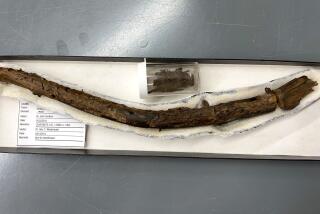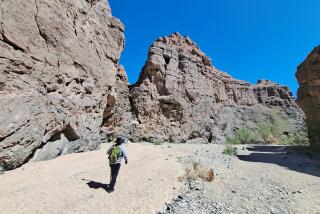CHOLLA CACTUS
- Share via
It seems that where there’s California desert, there also are cactuses.
Although a common sight, however, these spiny, native plants are plentiful only where there are seasonal rains and the soils are well-drained. Their shallow root systems absorb water from the rains and store them in the plants’ succulent stems.
Many of the cactus species that grow in Southern California vary greatly in appearance. Most fall into one of two broad categories--prickly pears, which are flat and broad, or the cylindrical-branched cholla (pronounced CHOY-yah). Pictured here is tree cholla (Opuntia imbricata), also known as cane cholla.
The cholla is a small, spiny, leafless tree or bush that grows in plains, deserts and among pinon and juniper trees. It reaches heights of three to seven feet and has deep reddish-lavender flowers that bloom in the summer near the ends of the branches. The flowers are two to three inches wide.
Branches are five to 16 inches long and 3/4 to 1 1/2 inches wide. They are topped by several sharply raised, spine-bearing knobs. Spines are 1/2 inch to an inch long and grow in clusters of 10 and 30. In areas where there is little other greenery, the spines discourage animals from nibbling. The cholla’s fleshy, yellow fruit is egg-shaped and an inch or two long.
Cholla seeds are incapable of germinating, so the plants usually spread as branches fall on the ground and take root. Once their flesh has weathered away, cholla stems become hollow and full of holes.
Also common here are teddybear cholla, a miniature tree with short, stubby branches, and silver cholla, which has greenish-yellow flowers and slender, sprawling stems.






